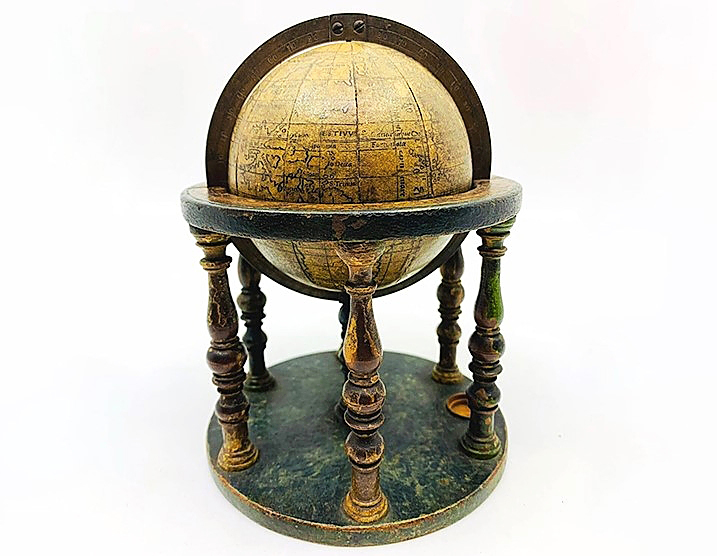STAFFORDSHIRE, U.K. — A 470-year-old globe, believed to be the oldest example of its kind offered at auction, sparked an intense bidding battle — and left the seller in shock as she watched live online.
Five phone bidders competed against the internet to secure one of the rarest objects ever uncovered by Hansons Auctioneers. Such was its scarcity many museums could not advise on the Sixteenth Century terrestrial globe because they had nothing like it in their collections.
The historical item prompted strong worldwide interest ahead of auction and it swiftly soared past its guide price of $26,443 and $39,650 (£20/30,000). The hammer eventually fell at $153,861 to a private buyer in New York, bidding online.
The seller, who watched the sale live from her home in Wales, was stunned as the bids came flooding in — and revealed she paid only $198 (£150) for the item at a Welsh antiques fair.
“I thought I was pushing the boat at £150 when I bought it during the pandemic,” she said. “I had no idea it was so important and valuable. I watched the auction with my friend, my husband and a glass of wine. My friend was crying, I was in shock and my husband was totally and utterly dumbstruck. It goes without saying that I’m delighted.”
The seller took the object along for free valuation at Hansons’ Staffordshire saleroom, Bishton Hall, where she met the firm’s works on paper expert Jim Spencer. His intensive research revealed her antique was an incredibly rare circa 1550/60 globe by, or a derivative of, Francois Demongenet, a French geographer known for globe gores which became a model for other makers.
Spencer, head of Hansons’ Library Auction, said: “I’m delighted for all concerned. This is an exceptional result. This object truly deserved to excel. To me, the globe feels priceless. It’s just so early and fragile to have survived the centuries.
“One specialist told me Sixteenth Century globes are nigh on impossible to come across. In terms of value, the general consensus was that it was a ‘complete unknown.’ We think our globe could be the earliest ever offered at auction.”
The oldest terrestrial globe in the world is the Erdapfel from 1492. The second oldest, the Ostrich Egg Globe from 1504, was sold at the London Map Fair in 2012. Then comes the Hunt-Lenox Globe, circa 1510.
The globe depicts a world before Australia had been discovered by Dutch explorer Willem Janszoon in 1606. The country appears as part of a southern land mass called Terra Incognita — unknown land. Japan is called “Sipannge”;islands near Java are termed “Gryforum Insule”; North America is marked “Devicta ann 1530”; and South America is marked “Nova Terra Inventa anno 1492” and “Canibales Tropophagi.”
For additional information, www.hansonsauctioneers.co.uk.





